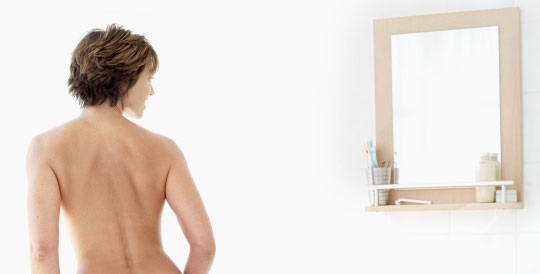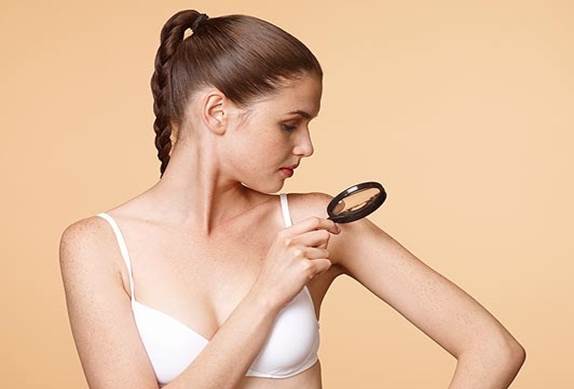Under any form of development, on your skin, whether it is flat or convex, either brown, fawn-colored or pink, all are considered a mole. The more sunbath you take, the darker your moles will be. Normally, one person has from ten to twenty moles, according to National Cancer Institute, most of moles are benign and harmless. But once a mole changes its color, shape, or appears jagged, you should see your doctor. He might remove it and check the cancer cells called melanoma. Some risks can cause malignant tumors like fair skin, excessive sunburn, heredity and weak immune system.
Guides
- Check your entire body skin in front of a big mirror. Use a hand mirror to check on the back of your neck, scalp, and back. Watch carefully all of your moles whether they has changed the color, shape, size or not; and pay attention to the new ones.

Check your body carefully in front of a big mirror
- See your doctor as soon as your moles are bleeding or itchy. Or else, you are in constant pain, this might be a sign of skin cancer.

Take a visit to your doctor
- While checking your moles every month, remember ABCD about malignant tumors: Asymmetry (moles have different shapes compare to others), irregular Border (when moles have borders in scalloped shape), varied Color (changing color: a mole has many colors), diameter (a mole which is bigger than a pencil eraser must be noticed)

Remember ABCD
- Ask your friends or your family to have a look on your scalp if there is a mole there. Tell them what to look for so they will know the difference in a suspicious mole.

Ask your friend for help
Advice and warnings
Meet your doctor if you find any mole lies in an area which annoyed you because of clothing rubbing.



